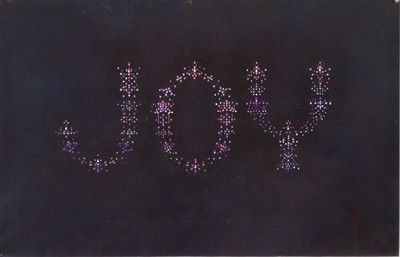Joy
I quit drinking a few months ago, because I had more work ahead of me than I could reasonably complete with a hangover. This fairly dramatic change in my diet had two notable consequences: I started eating far too much candy; and the emotion I had been (largely unbeknownst to me) drowning in wine started regularly surfacing. Most prominently a feeling of abundant joy began welling up in my chest rather unexpectedly and with frequency. A lot of water metaphors here—”my cup runneth over” with water metaphors. After some time this feeling didn’t return; suppose my system established a new baseline. But I thought it worth mentioning just thinking how rare joy must be for so many of us. And to report that I felt it briefly.
This exhibition isn’t named for that joy, though. The titled is borrowed from Stephen Kaltenbach’s painting of the same name. Despite having appeared on every relevant list of the time, Kaltenbach, a self-described “secretive person,” is perhaps the least well-known of the first-wave American “concept art” cohort. He has a number of references in Lucy Lippard’s “Six Years”; he was included in pioneering curator Harald Szeemann’s landmark exhibition “Live in Your Head. When Attitudes Become Form”; you get the picture. He emerged in New York City at the end of the 60’s, attracting attention with conceptual pieces that, with a simple phrase, injected an uncanny in the everyday and a slippage in the logic of time and space, in a manner typical of the conceptual canon. “Joy” is an instance of his “Nuclear Project”, in which he made various artistic proposals for the disposal of the world’s nuclear arsenal; in this case launching every nuke simultaneously into space, thereby creating a typographical explosion of the word in the night sky.

By 1969, Kaltenbach had a solo exhibition at the Whitney Museum, and in 1970 suddenly announced his departure from the cosmopolitan art world of New York and from the concept art practice that won him fame. In a seemingly dramatic shift, he relocated to Sacramento, California, and rededicated himself to creating meticulously detailed, large-scale psychedelic paintings.
Sibylle and I found this jigsaw puzzle of a Francis Bacon painting at some thrift shop in Basel. It seems someone had bought it at the Fondation Beyeler gift shop but never bothered to open it, and an unopened thrift store jigsaw puzzle is the best kind. We assembled it on the coffee table over several days, starting with the border, then the figure. Once those had been completed we set in on the background. This part was a struggle; we even organized the remaining pieces by shape to help us place them. And after some hours of painstaking assembly, it was abandoned.
[Exhibition text for "Joy" at Kaiserwache]